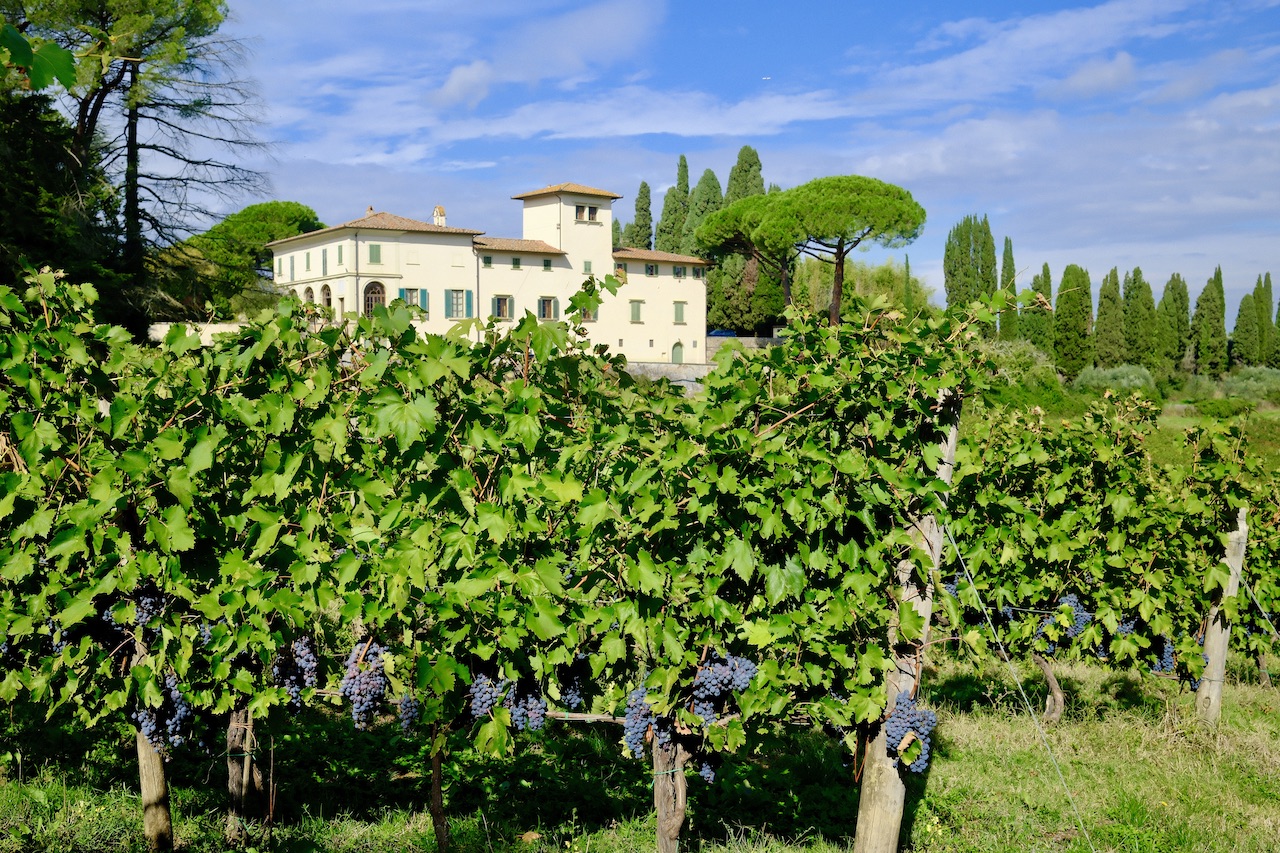Wine tours in Tuscany - About Angie - +39 3333185705 - angie.chianti@gmail.com
When friends ask me to advise them on a suitable wine, more often than not they say to me ‘I don’t like dry wine’, followed swiftly by the statement ‘I prefer fruity wine’, and this is a common misconception in wine tasting; that a fruity wine is sweet, and an oaky, tannic wine is dry. And why wouldn’t we think that? We react to what we taste and our preconceived notions of those tastes. Think of biting into an apple, a mango or a cherry and imagine theirs varying degrees of sweetness. In contrast, picture yourself chewing on a grape skin once the fleshy, juicy part of the grape has been removed; your mouth will be instantly dry, and this is the effect tannins have. Tannins give a wine structure and longevity, they are derived from grape skins macerating in the wine during fermentation, and theirs dry, gripping astringency leads us to think the wine is dryer than that of its fruity counterparts.
What does dry wine mean?
However, in wine making, the terms dry and sweet relate merely to the amount of residual sugar left in a wine. When a wine is made the yeast converts sugar into alcohol, and a dry wine will have undergone a full fermentation process, leaving no residual sugar. However, if the process is stopped before fermentation is complete, the result is an off-dry or sweet wine, according to how much sugar is left in the wine. For example, a Chianti, whether fruity or tannic, is a dry red wine. Vin Santo however, which is made by Chianti producers, is a sweet wine. The Trebbiano and Malvasia grapes are dried for months in a warm attic allowing the sugars to concentrate; the longer they are left the higher the resulting sugar content of the wine will be, resulting in a beautiful rich wine with honey and nut flavors.
Chianti offers wine as beautiful as the landscape itself. Rolling hills and sun-baked slopes ripen the grapes to perfection, the region’s predominant grape variety, Sangiovese, benefitting from the varying climates and terrain. From the elevated slopes of Rufina with its cool evening breeze, creating complex and sophisticated wines with subtle acidity and structured tannins, to the cherry laden wines of Chianti Classico with their balanced acidity and gripping tannins. It is a region offering varying degrees of quality and style, the most basic being the wines from the Chianti DOC. Designed to be drunk young, these are full of sweet and juicy red fruit flavors, and the permitting of white grapes to the blend allows costs to be reduced and creates less tannic wines with a high acidity. Chianti Classico, a DOCG of a much superior quality, adds only red grapes to its 80% Sangiovese blend. With a minimum of 12 months oak barrel aging required, the subtly complex wines consist of firm tannins, giving the wine great potential for further aging, with good body and delicate floral and cherry notes. Chianti Riserva refers to a wine that has undergone a minimum of two years in oak, followed by three months or more of bottle aging, creating a full-bodied wine whose tannins and acidity have softened, resulting in a smooth, velvety wine with hints of violet, black cherries and chocolate; a wine often capable of further aging.
Is Chianti a dry wine?
Therefore, regardless of its flavors, Chianti is very much a dry wine. And whilst we shouldn’t shy away from describing the tannins as bone-dry or the fruit as sweet, it is important to separate our assessment of the wine’s flavors from its level of sweetness, and it is these assessments that will help define the right wine of choice for your tastes.
Discover the magic of Chianti wine with Angela Tours: sommelier and expert tour guide of Tuscany.
Book now your special and exciting wine tour: Chianti and Super tuscan Wine Tour from Florence, 3 wineries!






